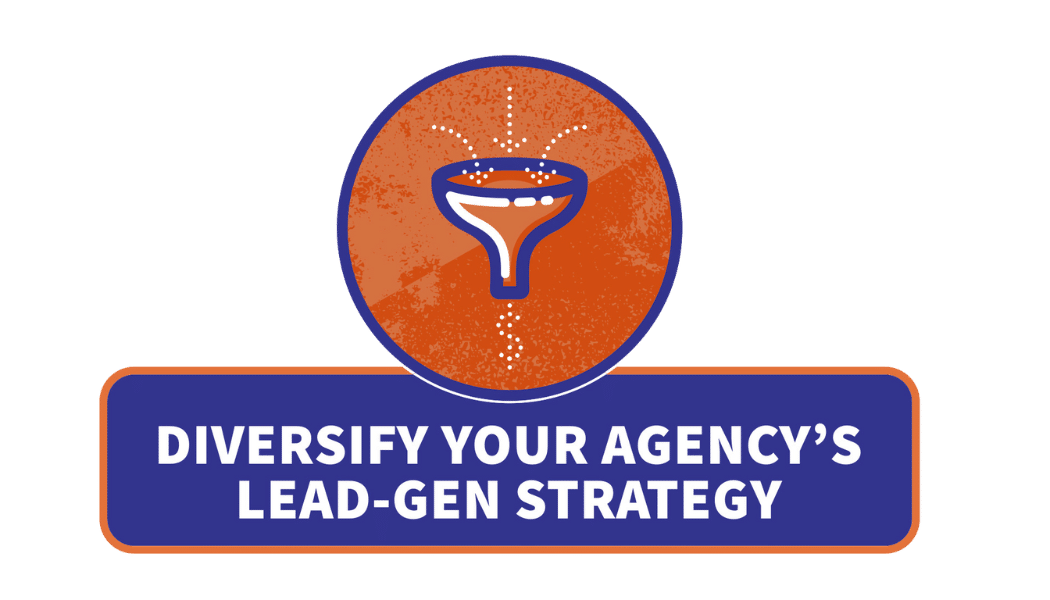When times are tough, many agencies consider changing their services. This includes offering current services in a lower-priced package—including Paid Discovery—and adding entirely new services. It’s important to innovate… but if you get it wrong, you’ll waste time and money.
Usually, agencies think about Demand—that is, do clients have a problem that merits buying your new service? And that’s important. But there’s a second part that many agencies miss—aka Supply. That is: Do you have access to labor that can deliver the service reliably, profitably, and (ideally) at scale?
If you don’t have the labor—but you forge on anyway—you’ll waste time and money on a service that clients want, but that you can’t profitably deliver. That is to say, go beyond demand-gen and consider “supply-gen” to find staff to do the work. You’ll have unhappy clients, overworked team members, and a blow to your agency’s reputation. Plus, it’s hard to “Work Less, Earn More” if the owner gets sucked into doing most of the work.
Let’s look at how to approach things at your agency.
Remember, it’s Supply AND Demand
Have you ever gotten excited about a new service offering, only to see it fall flat after launch? You pour time and money into building something you think your clients will love, but the market response is lukewarm or worse. Sound familiar?
This scenario plays out all too often in the agency world. We get caught in the traditional “supply and demand” trap, assuming that if a client asks for a service, we should offer it. But what if there’s a different kind of supply and demand at play—one that focuses on leveraging your agency’s existing strengths before chasing shiny new objects?
Demand first… plus Supply always
In economics, supply and demand represents a fundamental relationship that drives prices and resource allocation. When demand for a good or service is high, prices tend to rise—incentivizing producers to increase supply. And the opposite happens when demand is low.
Agencies often translate this concept into believing that client demand dictates service expansion. A client asks for social media management? We scramble to build a social media team. A client wants to explore influencer marketing? We add it to our service menu, too. While there’s some logic to this approach—you shouldn’t add services without demand—it can create new problems, if you aren’t ready to fulfill the work.
Agencies have trouble with gross (delivery) profit margins all the time. Now, imagine you launch that new service that clients love, but that you struggle to fulfill…
- Revenue might cover your expanded payroll, but it won’t grow your reserves fast enough. Or the new work distracts from higher-margin services.
- Instead of celebrating each new sale, you’ll dread the impact on your bottom line.
- Eventually, you’ll burn through cash and might even need to do a layoff.
Several years ago, a client focusing on HubSpot mentioned they were considering adding Marketo services because they could charge more. That’s true, and Marketo would build on their existing marketing automation experience. However, Marketo-experienced employees and contractors cost a lot more, too. The “cheapest competent available person” might be too expensive, without raising prices first. This would squeeze the agency’s profit margins—and account management process, because enterprise clients tend to have higher expectations.
My experience: Demand for a VA agency for agencies… but not Supply
Several years ago, I explored launching a Virtual Assistant (VA) agency with a trusted partner. There was clearly Demand for help—agency leaders benefit from administrative support, even if they don’t need a full-time Executive Assistant.
The problem—which my prospective partner knew, from her experience training VAs—was around Supply. It’s hard to find VAs who are competent, reliable, and affordable. The best ones get snapped up quickly, or they start their own freelance practice to charge “retail” rates to direct clients. That leaves not-so-competent candidates, and people who are competent yet flakey.
If we’d launched the business, we’d have tons of Demand… but no reliable Supply. I pulled the plug on things by the second conversation, once it was clear we had a Supply & Demand mismatch. Could the business have succeeded? Sure. But it would have required major effort and a lot of luck. And in my case, even with a partner running things, it would have distracted me from my agency consulting work.
What to Do Instead: Validate Demand, then Confirm Supply
Once you’ve validated that there’s demand from current and future clients, pause to confirm there’s supply—that is, a supply of affordable labor to do the work. That might initially include contractors or whitelabel firms. Eventually, you’ll hire employees—sooner or later—if the new service is a strategic part of your growth.
I recently spoke with the owners of an agency that focused on paid advertising and creative design. At some point, they might offer services on organic SEO. We know that’s a service clients need—some agencies focus entirely on SEO. But the agency should see if they can find people to help; good SEOs are not cheap.
As a shortcut for adding new services, consider hiring a whitelabel agency to provide the initial service. They’ve already built a team, so you won’t have to start from scratch. Then, you can educate your team about how to sell and manage the work.
If your clients like the work and you want to offer more of that service, you might bring the work in-house. But I wouldn’t start there immediately. A client hired a designer for future services, only to decide a year later that it wouldn’t be a focus after all. I recommended giving the employee healthy severance, since it wasn’t their fault.
I used to outsource social media via a friend’s agency. For example, they’d record a video session and “slice” it into shorter videos. When the agency’s social media specialist left, new hires expected far more money. As the owner regrouped on how to staff this, they recommended that I hire directly. This took longer, but it’s been a better match than the old outsourced model. And that would be even more important if I were providing those marked-up services to clients.
Conclusion: Remember a different kind of Supply and Demand when you add services
Focusing on internal “supply” before launching new services isn’t about resisting change. Instead, it’s about building a sustainable growth strategy—leveraging your strengths and building a stronger agency.
Want to generate more leads for new or existing services at your agency? Buy a ticket to my latest workshop: Diversify Your Lead-Gen Strategy: A Gimmick-Free Approach to Sustainable Agency Growth.
Question: How do you evaluate Supply AND Demand for new services at your agency?


